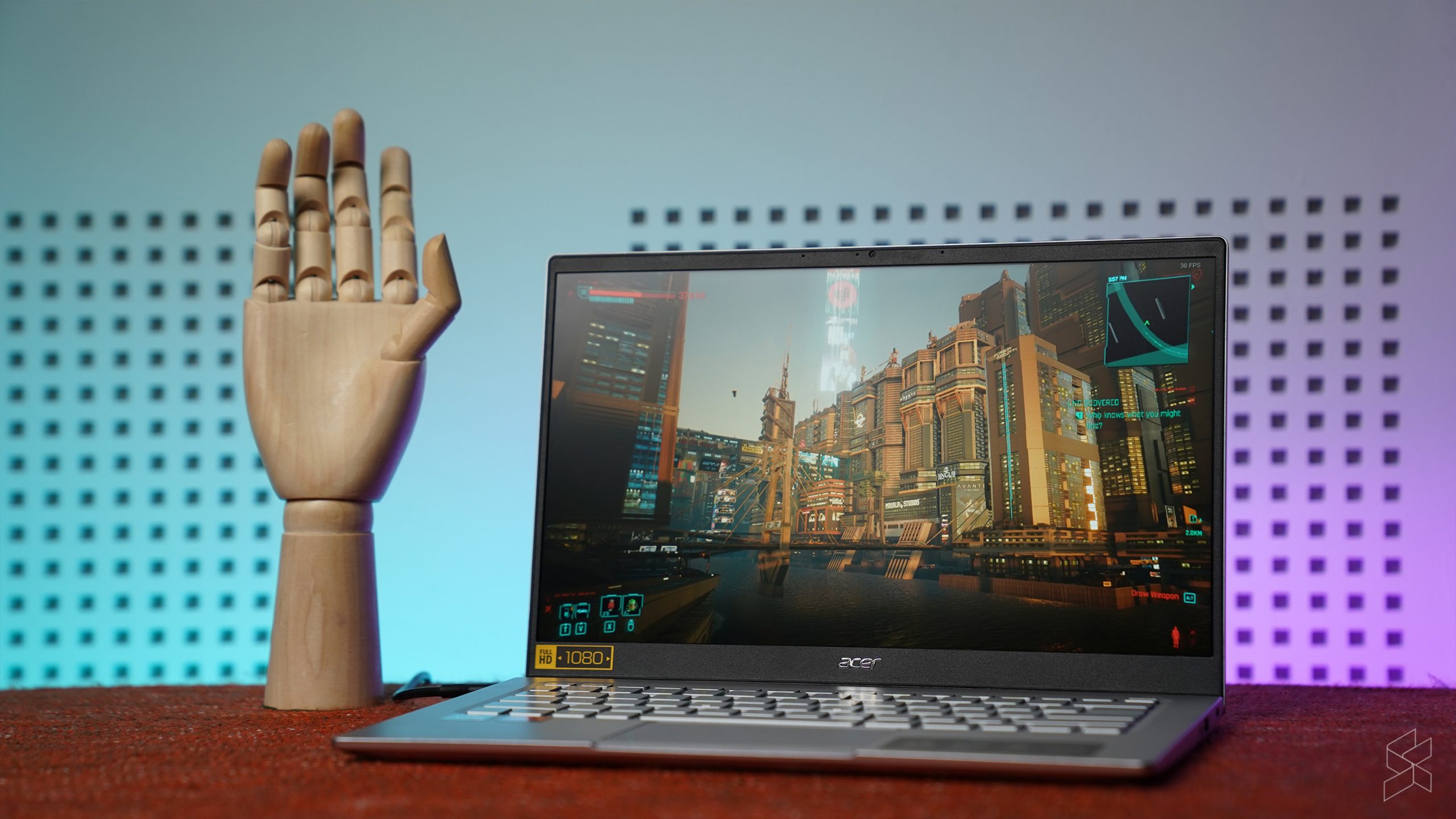There was a time a few years ago when my go to recommendation for a simple, bang-for-buck thin and light laptop was the Acer Swift 3, especially the ones powered by AMD Ryzen processors. I wasn’t the only one who thought they were brilliant laptops either; I remember just how hard it was to find one in stock at the height of the pandemic.
Alas, those days are long gone, and the Swift 3 of old has been retired. Acer has revamped the naming scheme for their mainstream Swift series of laptops, with the flagship Swift 5 now the Swift 14. The Swift 3 on the other hand became the Swift Go, with the Swift Go 14 and the Swift Go 16 being announced back in CES 2023 at the start of the year.
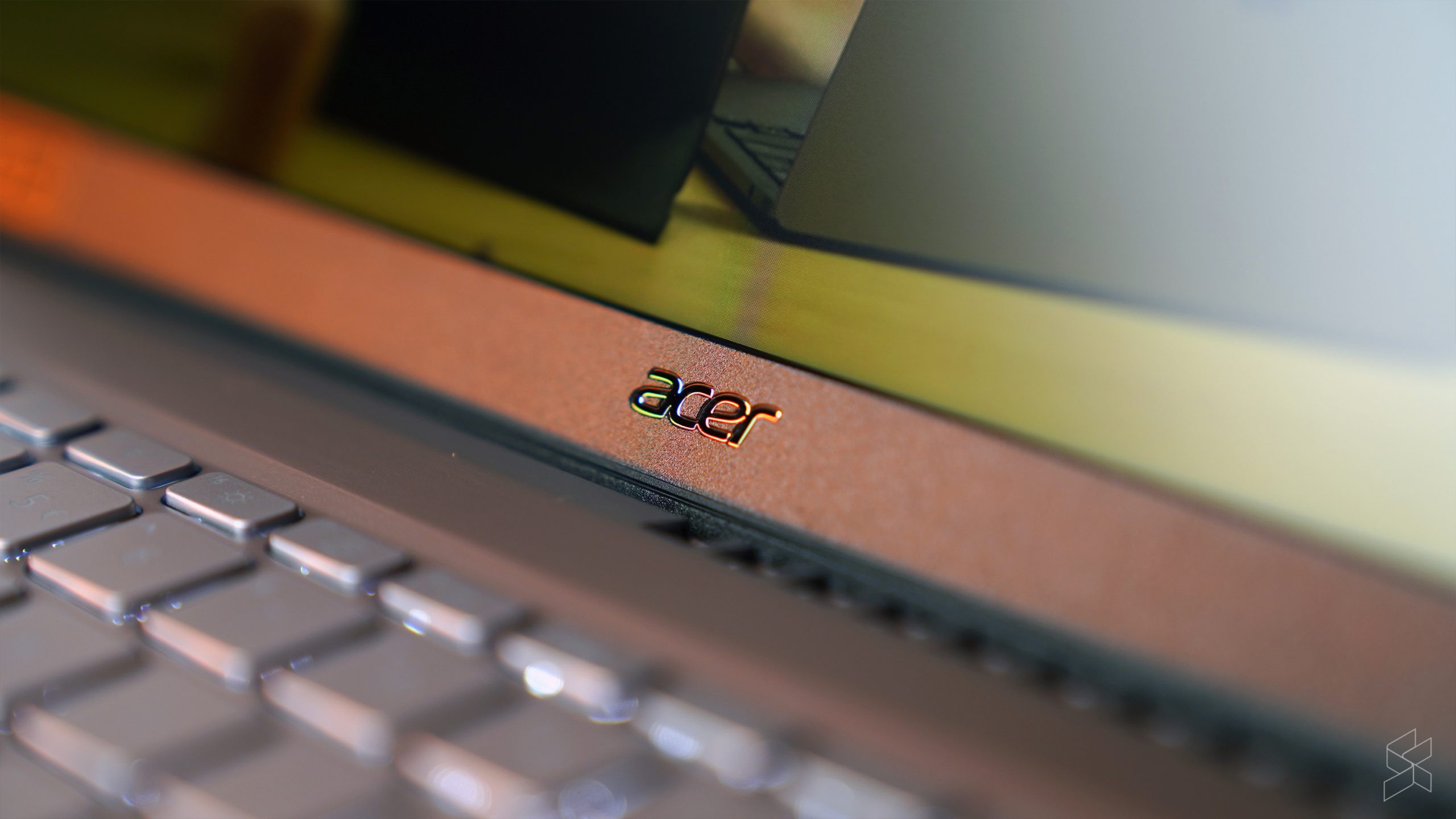
Despite the rebrand though its core remains the same: a value-focused, no nonsense laptop sitting just below the now Swift 14 in the product stack. Acer Malaysia eventually brought the Swift Go 14 to our shores, and when they offered us one to review, we thought it was a good chance to take a look at what’s changed and what has stayed the same since the ol’ Swift 3 days.
Solid—if unassuming—performance
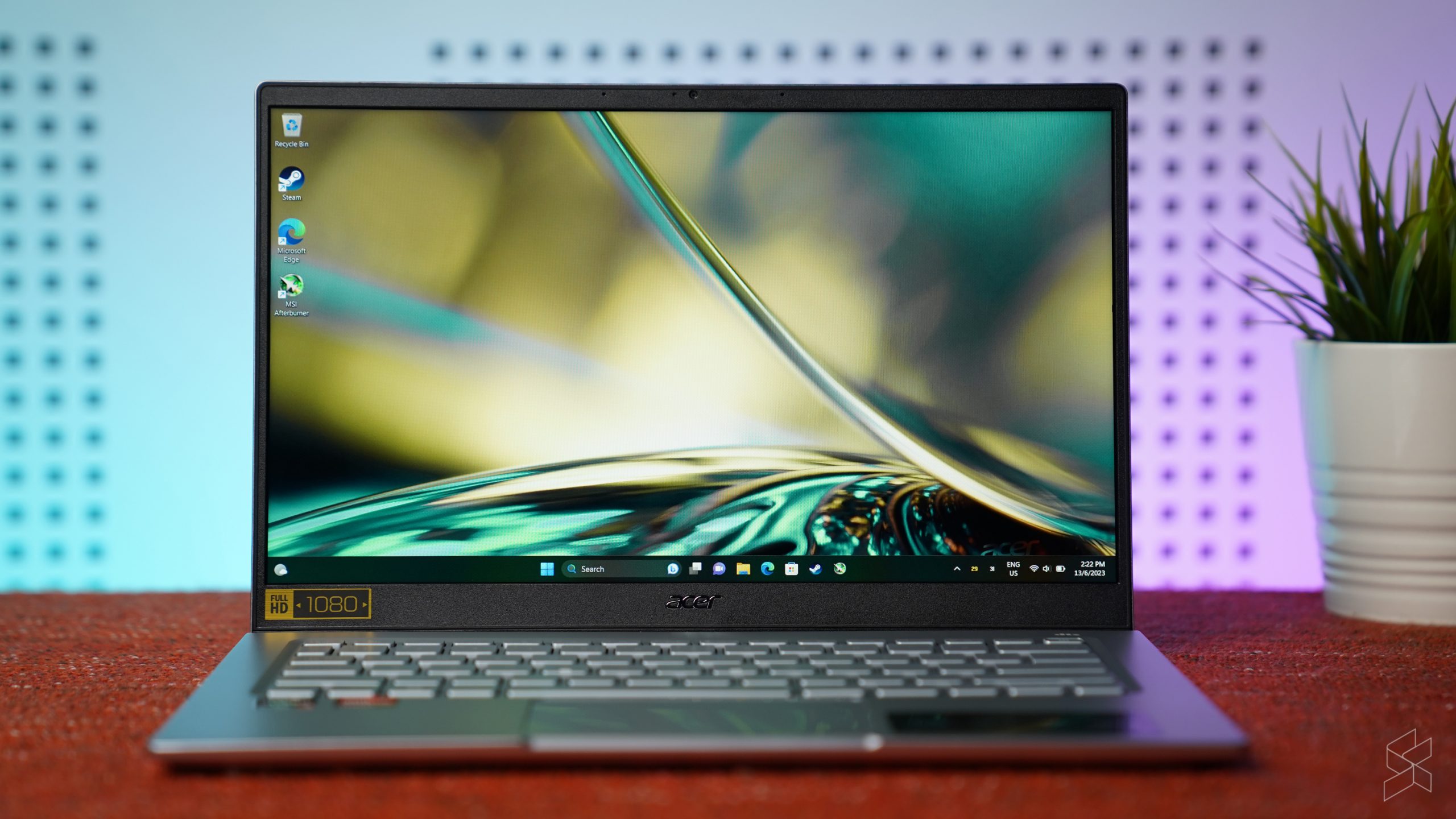
Now although the Swift Go 14 originally debuted at CES 2023 with Intel processors under the hood, the ones that made it to our shores were powered by Team Red instead. As such, our review unit came with an AMD Ryzen 7 7730U mated to 16GB of LPDDR4X RAM and a 512GB PCIe Gen4 SSD.
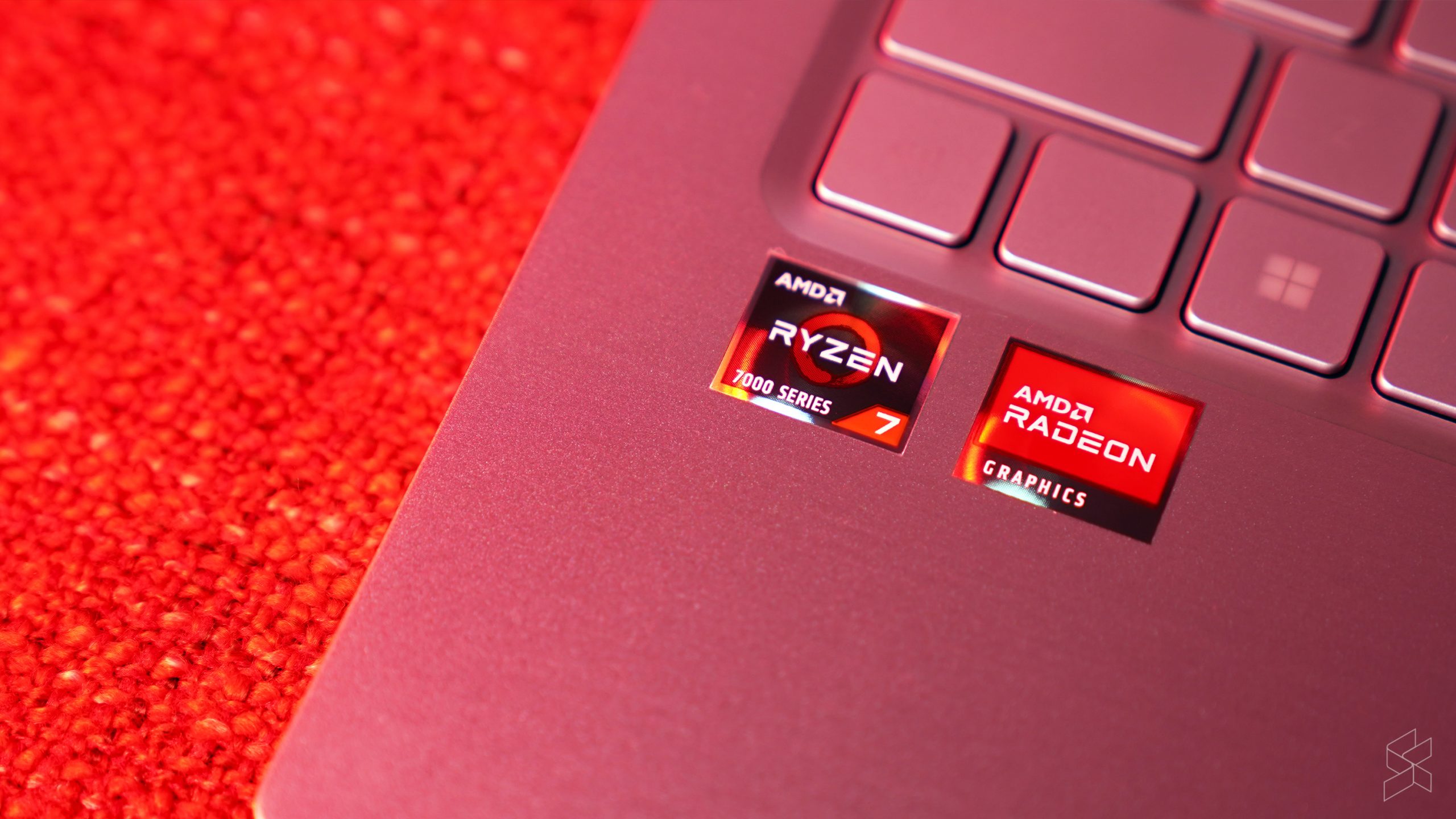
When put to the test, the 15W Ryzen 7 7730U performed well enough, with the eight core CPU getting a single core score of 1,475 and a multicore score of 10,692 on Cinebench R23. This puts it slightly behind Intel’s own 15W laptop chips in single core but slightly ahead on multicore workloads. This shouldn’t be too much of a surprise, considering that the Ryzen 7 7730U—despite the Ryzen 7000 connotation—is actually just a refresh of the Ryzen 7 5825U from before.
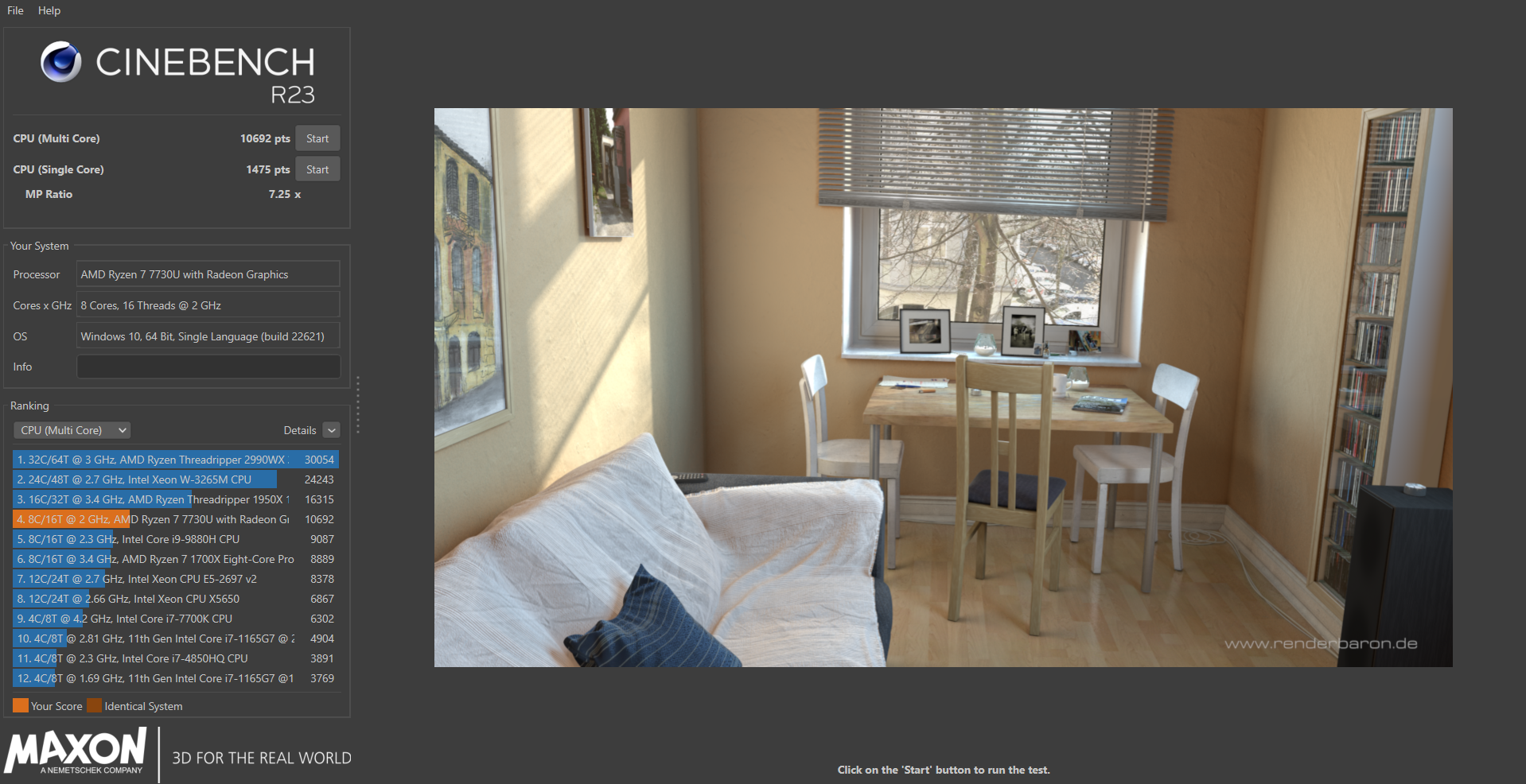
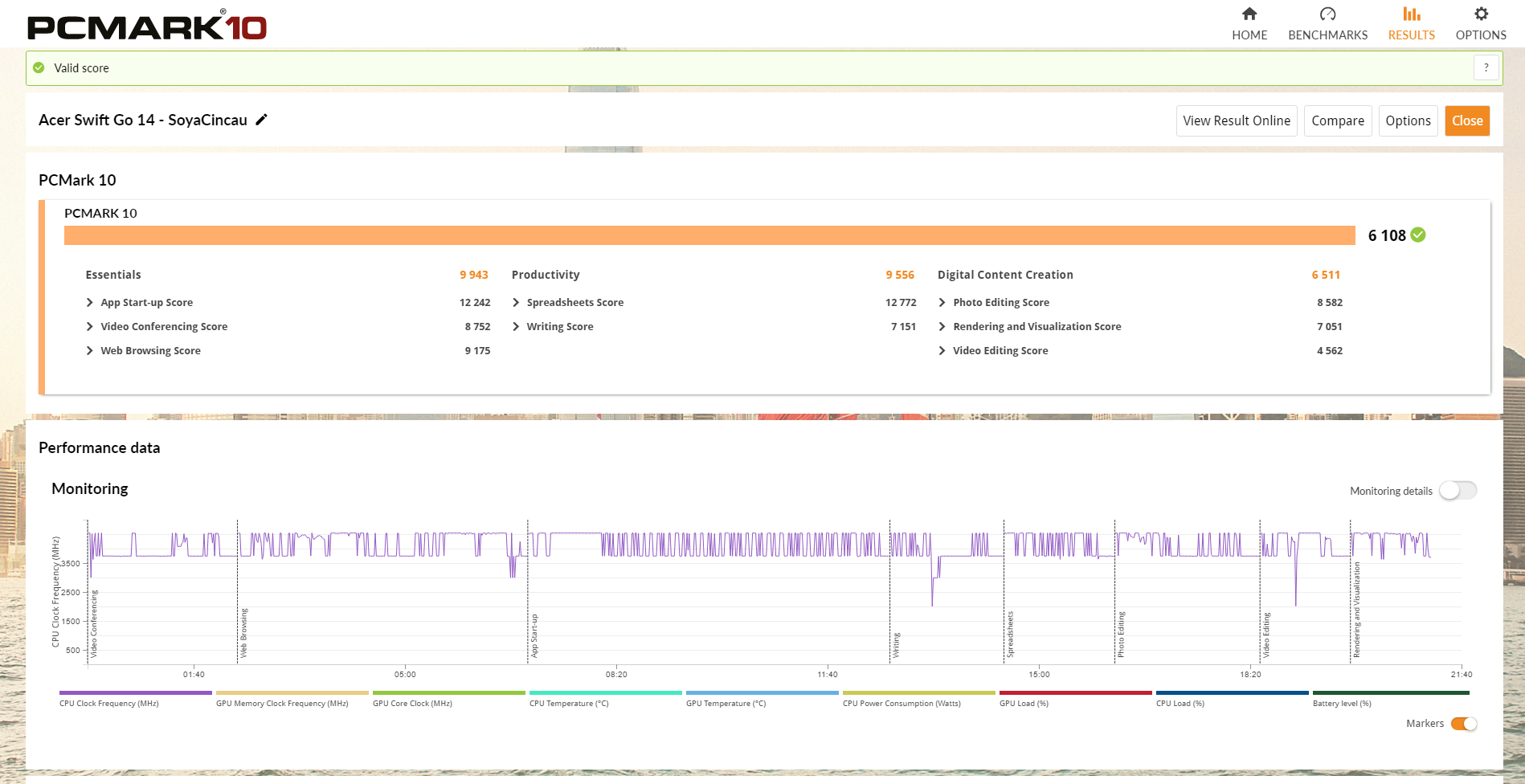

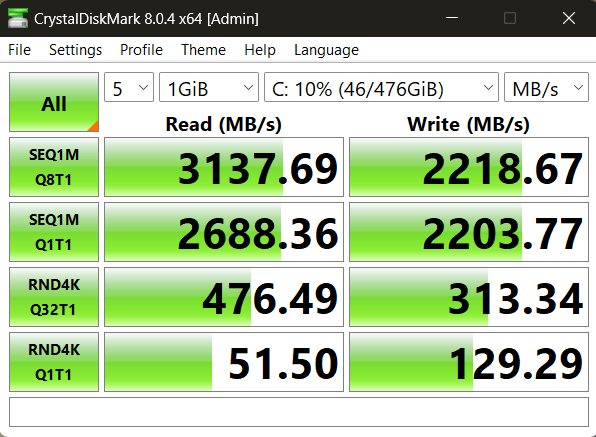
As for graphics, since it’s a refresh of an older processor the Ryzen 7 7730U it comes with a Radeon RX Vega 8. While it’s not as powerful as the Radeon 780M on the latest mobile chips from AMD that’s built on the RDNA 3 architecture, the older Vega integrated graphics solution will still be fine for casual gaming as long as you’re willing to lower the resolution and settings a bit. Heck, I was even able to kinda get Cyberpunk 2077 to be somewhat playable, as long as I capped the framerate to 30, lowered the resolution to 720p and had AMD FSR 2 turned on. That being said, the experience is much better on eSports titles like CS:GO or older games such as Sleeping Dogs.
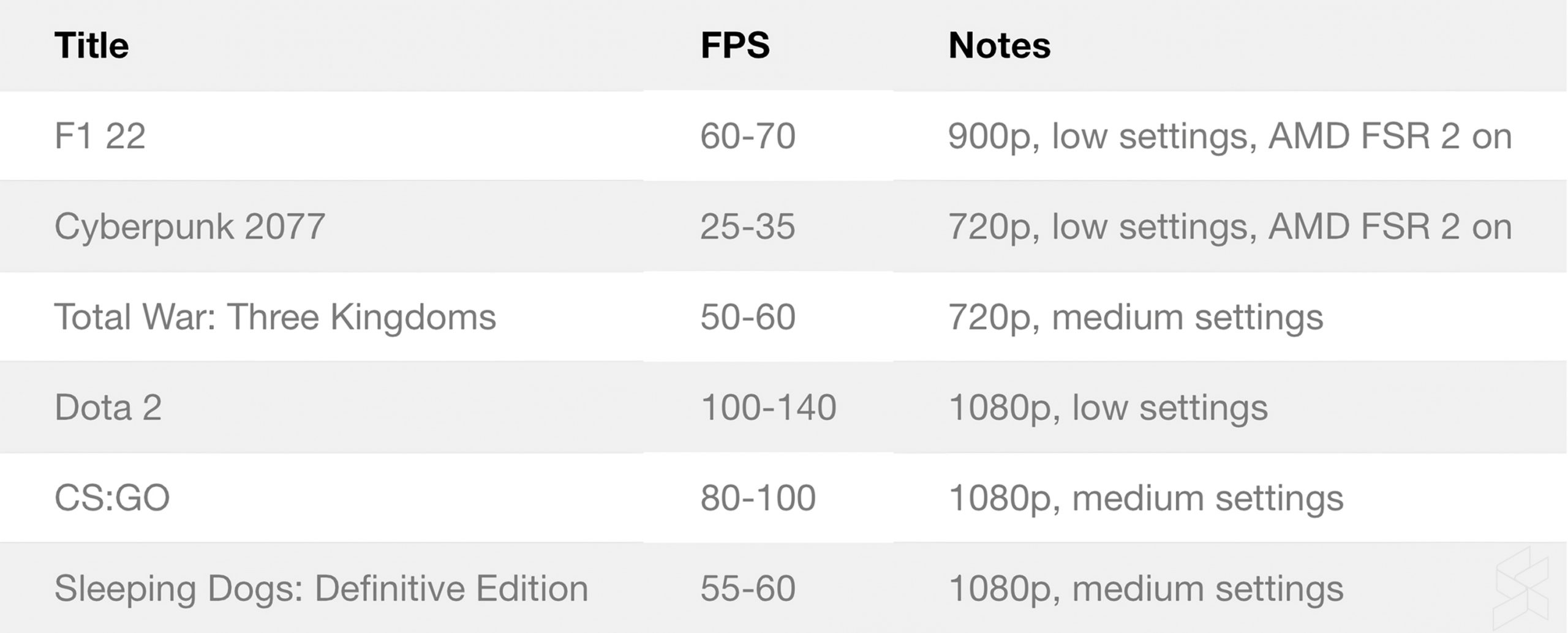
To be clear though, regular performance isn’t bad in any means—far from it in fact. In day to day workloads the Swift Go 14 performs absolutely fine. It’s able to take care of my usual suite of multiple Chrome windows open at the same time together with the likes of Photoshop, Spotify, Discord and what not in the background. It does get a little warm though especially when I tried squeezing the life out of that tiny Ryzen, sitting between 80 and 90 degrees under peak load, though it won’t really go beyond 80°C under regular usage. Do be warned though, when trying to play games, you will feel the warmth of the keyboard a fair bit, leading to sweaty palms.
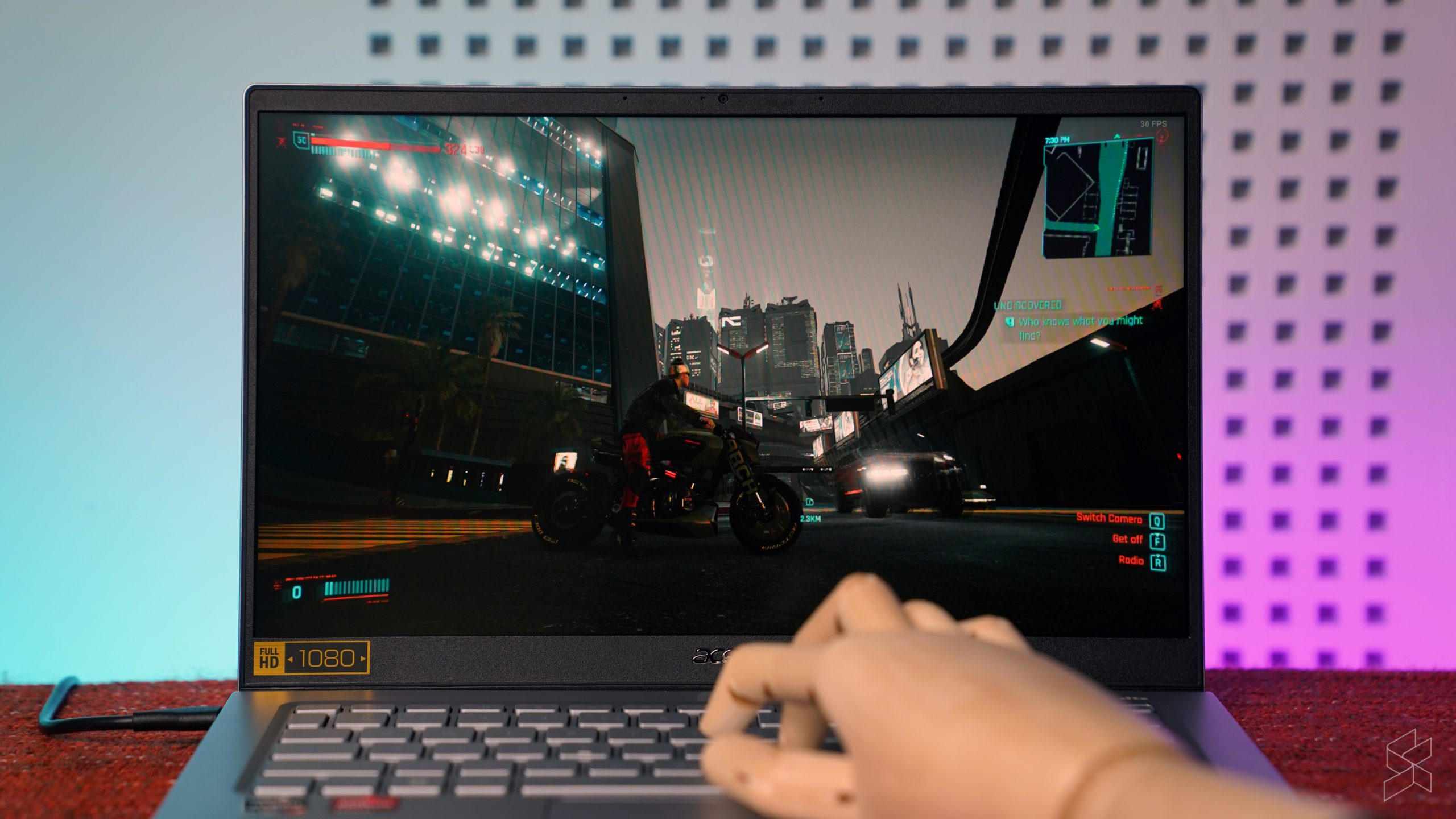
As for battery life, it’s fine. With my screen brightness down to about 50-60%, the 50Wh battery inside kept the Swift Go 14 chugging along just fine for about five and so hours before it got critical though this was without me actively trying to save battery life, so your mileage may vary. Oh, and speaking about the screen brightness…
A blast from the past display

Unlike its more upmarket siblings like the Swift 14 and Swift Edge 16, the Swift Go 14 has to make do with a standard 14-inch, FHD IPS display in a 16:9 aspect ratio. When placed alongside its Swift stablemates, the Swift Go 14 does look a little out of place as the others come with the taller 16:10 aspect ratio.
To me at least, the extra screen real estate really does make a difference in productivity workloads, and having to switch back to a 16:9 display required some getting used to again. But then again, for most people—especially if you’ve never used a taller display before—the regular 16:9 aspect ratio will likely be just fine for you. And in any case, the screen will get decently bright enough though it won’t be challenging more expensive laptops with OLED displays such as the Acer Swift Edge.
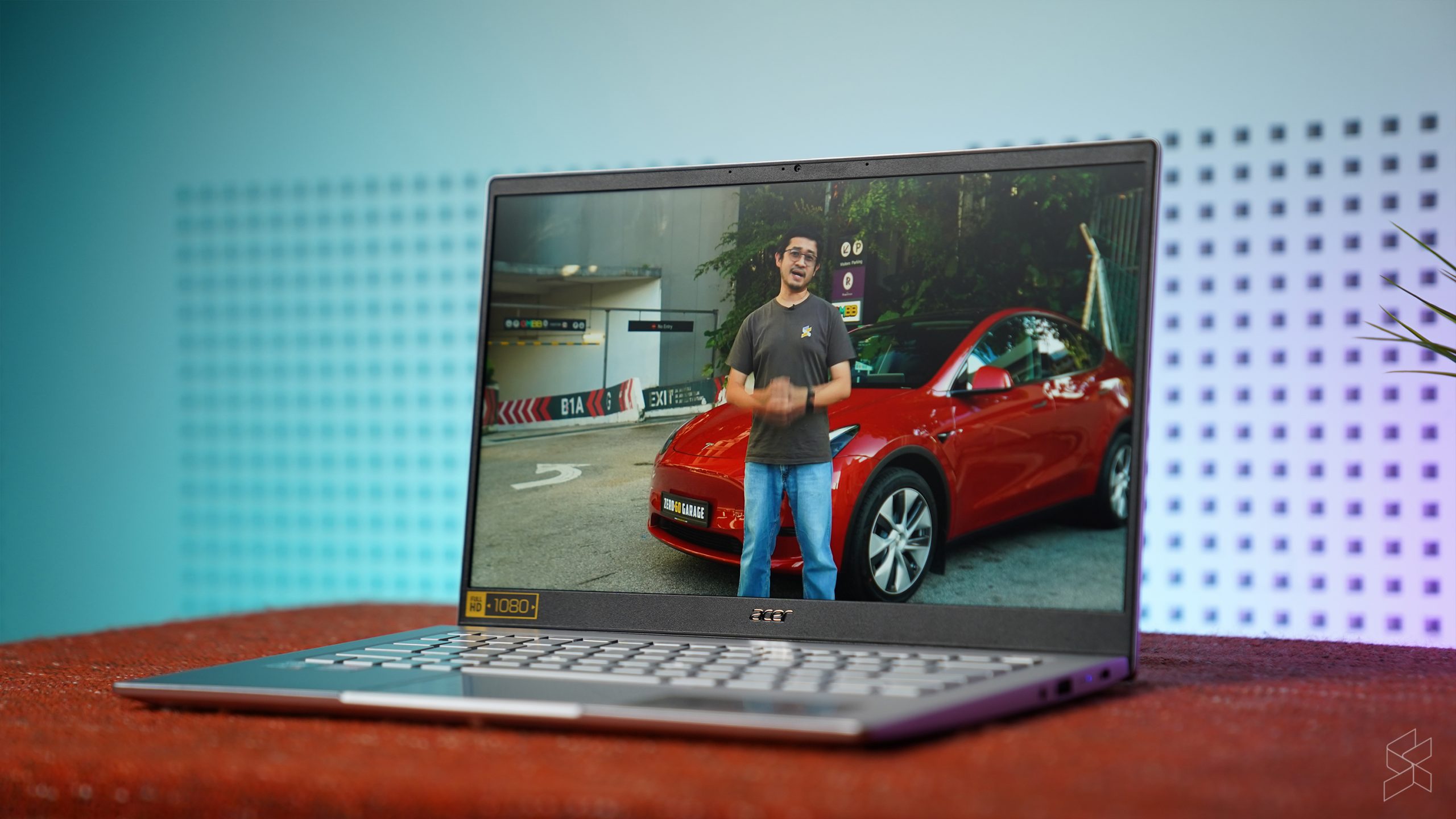
While the display is solidly in the ‘good enough’ category, one thing that was pretty lacklustre is its speakers. They’re rather tame, for the lack of a better word. It doesn’t get really loud, and at full blast it will sound pretty hollow with a lack of oomph. In this case, you’re probably better off with a decent pair of headphones connected to its 3.5mm audio jack.
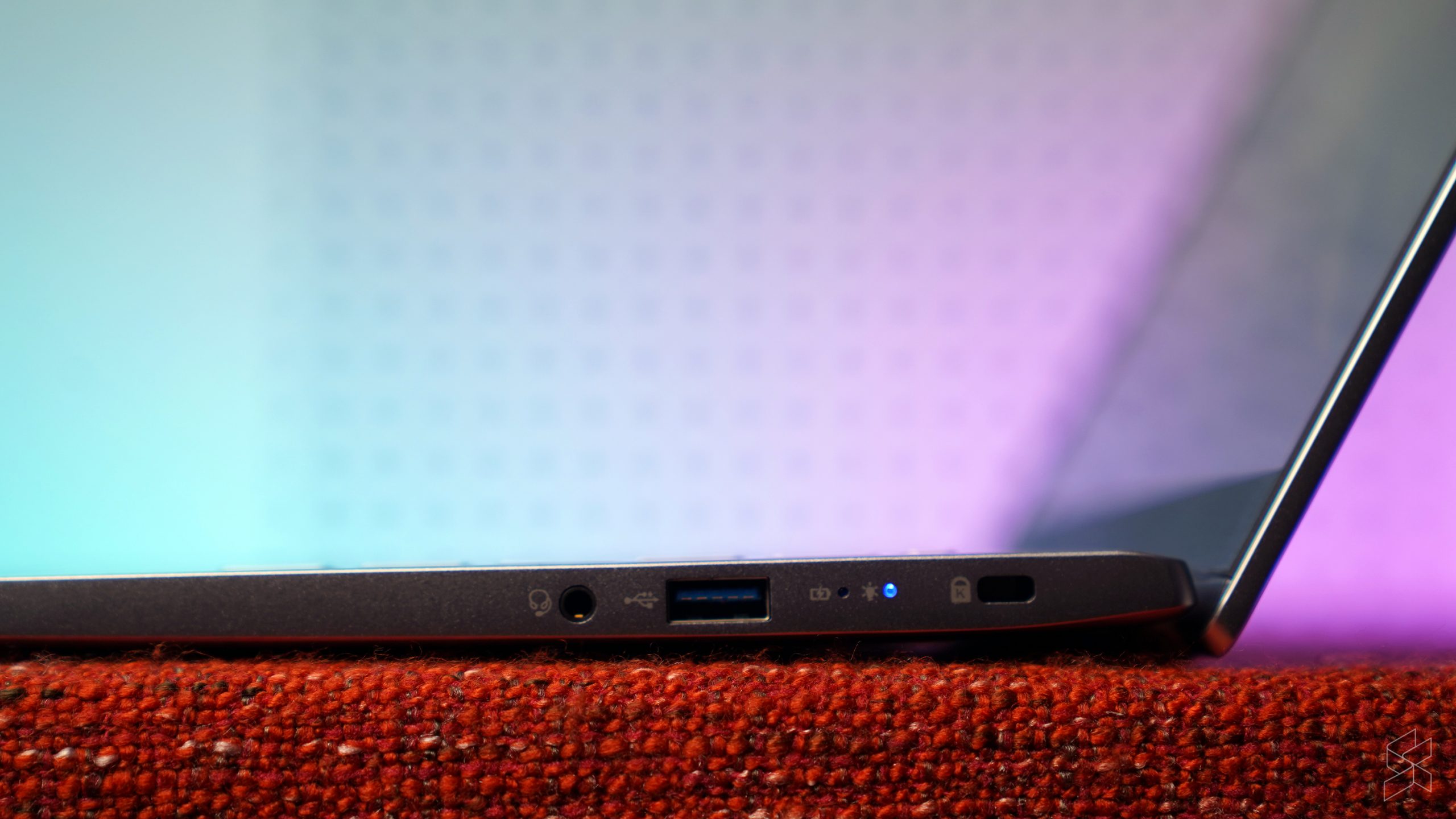
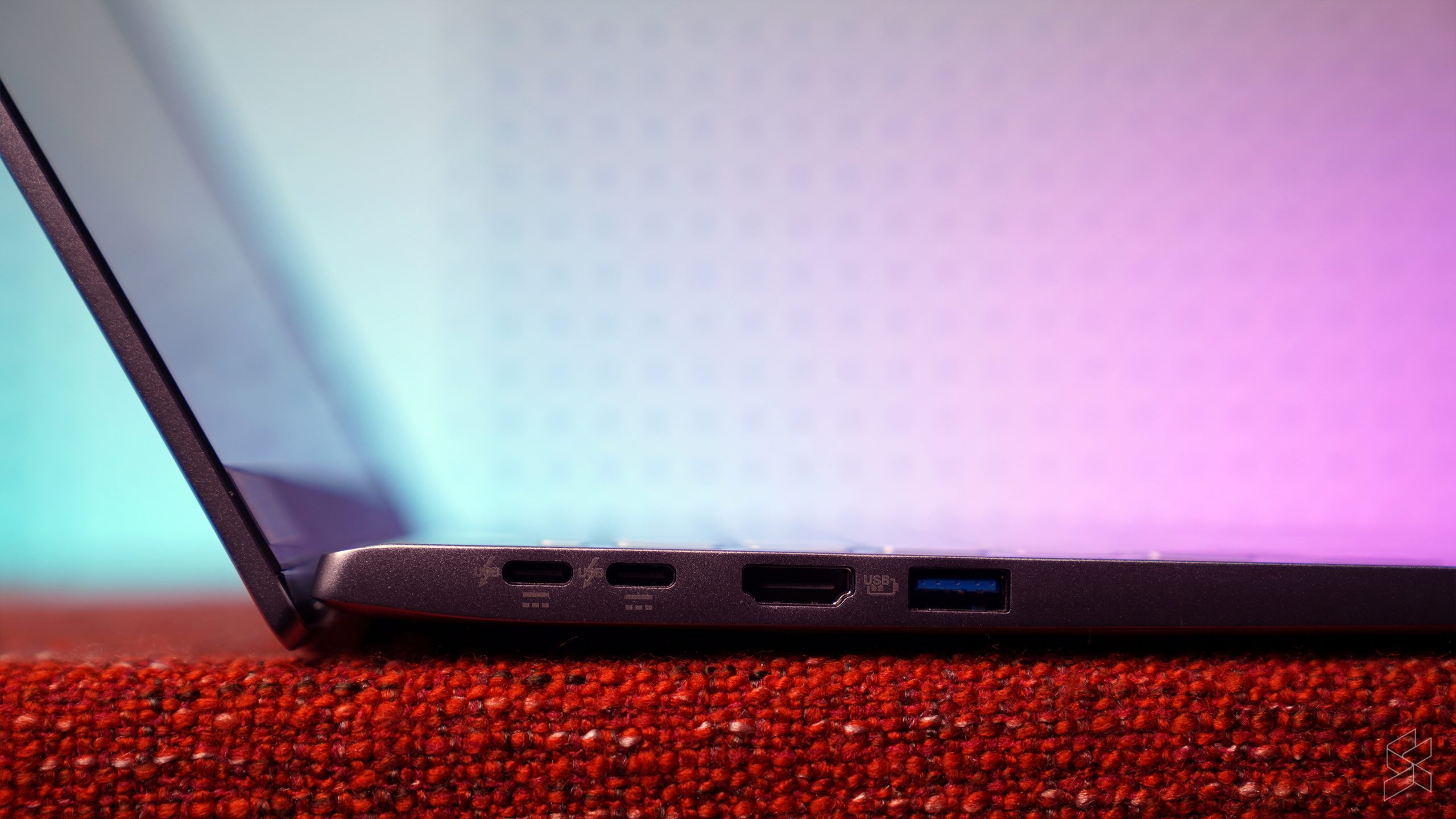
And speaking of ports, the Acer Swift Go 14 does have, again, a good enough selection of ports. It comes with two USB-C ports (one of them for charging), two USB-A ports and a HDMI 2.1 port. There’s also support for WiFi 6E and Bluetooth 5.2, meaning that it’s relatively future proof in this regard, with WiFi 6E connectivity something I wasn’t expecting in a laptop at this price point. Another nice to have is a fingerprint sensor for Windows Hello, and I was pleased with its build quality too. The aluminium chassis holds up well with little deck flex while the typing experience was actually fairly good, and at just 1.25kg it’s not that heavy either.

One final thing though about the Swift Go 14 that I did find mildly annoying: the bloatware. It’s becoming a bit of a recurring thing now with our reviews of Acer laptops in that while they tend to have pretty great value from a price-to-performance perspective, if you’re not super tech savvy you might not realise just how much bloatware they come with. On the Swift Go 14 in particular, I was greeted with pre-installed stuff like Agoda, McAfee, Forge of Empires, Evernote, Amazon, ExpressVPN and Dropbox. It’s easy enough to get rid of it, and I understand why it’s done, but it’s just a little annoying.
Great for students, good for everyone else
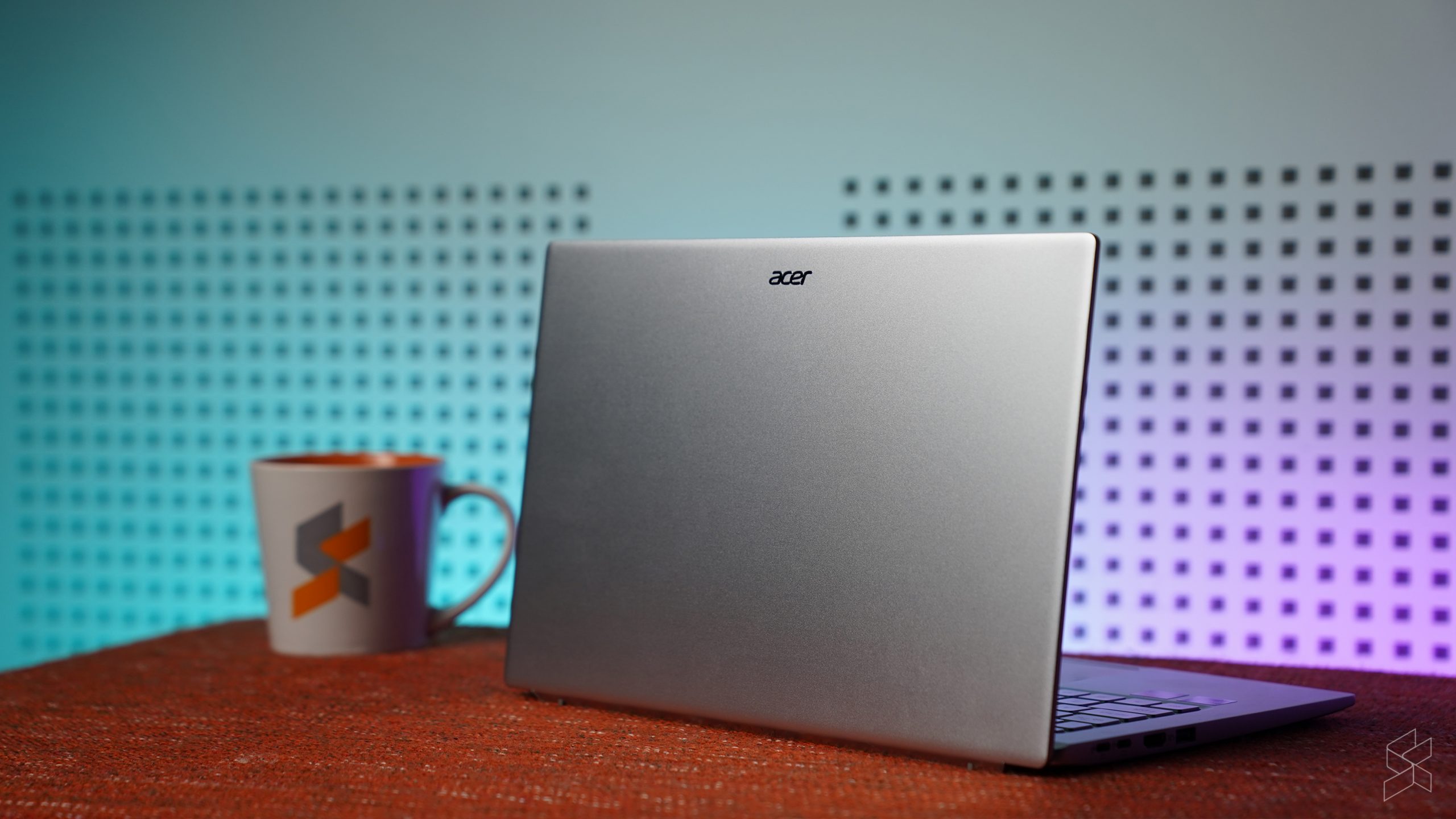
Overall, despite some of my points about the Swift Go 14 above, I actually was quite satisfied with the unassuming laptop. There are some issues I had, but as a whole none of them have been a dealbreaker. I see it more as some compromises that had to be made to ensure the Swift Go 14 stays within a certain price range.
That being said, I wouldn’t exactly recommend the same model we got for review as it’s priced at RM3,999, but the Swift Go 14 is also available with the Ryzen 5 7530U at a much lower price. You stand to lose a tiny bit of performance compared to the Ryzen 7 machine, but at up to RM800 cheaper, it’s hard to recommend the top spec model.
- Acer Swift Go 14, AMD Ryzen 5 7530U, 8GB RAM, 512GB SSD – RM3,199
- Acer Swift Go 14, AMD Ryzen 5 7530U, 16GB RAM, 512GB SSD – RM3,399
- Acer Swift Go 14, AMD Ryzen 7 7730U, 16GB RAM, 512GB SSD – RM3,999
In fact, for a simple laptop that’s built with an aluminium chassis, the mid-spec option with the Ryzen 5 7530U and 16GB of RAM and a 512GB SSD is the best offer here. You’ll definitely be able to find cheaper options such as the Acer Aspire Vero 14 or the Asus Vivobook 15X, but then you’re giving up the metal build that the Swift Go 14 boasts. Those also tend to offer 8GB of RAM only with 16GB options pushing them back into the same price category that the Swift Go 14 occupies.
The Swift Go 14 might not win any awards for design or innovation, but what it does offer is a decent, no nonsense thin and light laptop at a very good price (for the Ryzen 5 option with 16GB of RAM). I see it being a great option for college and university students in particular who are looking for a laptop for school, but honestly just about anyone would find it a good enough machine for day-to-day use.

